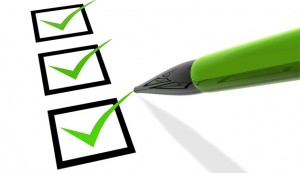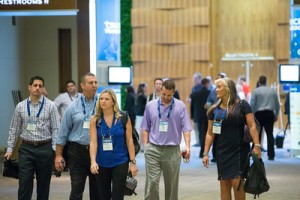In our previous post, we provided some tips on deciding where to place your booth. Exhibitor magazine wrote what we consider to be one of the best pieces of advice about booth location. Here is an excerpt:
First, decide how much space you need. The space required should be dictated by what you need to display in your exhibit, how you will disseminate your message (a theater presentation, for example, may require more room for a stage and the crowds that will gather), and the number of staff members you’ll need in your exhibit. The industry rule of thumb is to have one staffer per 50 square feet of open space. (This does not include people tied to a demo station or information counter.)
If you need more space but can’t afford the hefty price tag that comes with a larger footprint, consider moving upward instead of outward. Some fairly small exhibitors sometimes find it preferable to opt for the extra installation-and-dismantle costs to build a two-story exhibit rather than pay for more space. Some shows have caught on to this tactic and are now charging a premium for using a multi-story exhibit. Before planning a multi-story structure, check with show management on additional costs and height restrictions before signing on the dotted line.
Don’t despair if your ideal space has already been taken. Studies by market-research firm Exhibit Surveys Inc. show that effective pre-show and on-site promotions can overcome the obstacles posed by an out-of-the-way exhibit space, and draw your target audience to you, regardless of your location.
For more help with your exhibiting logistics, contact Barbara Stroup for a custom consultation.



